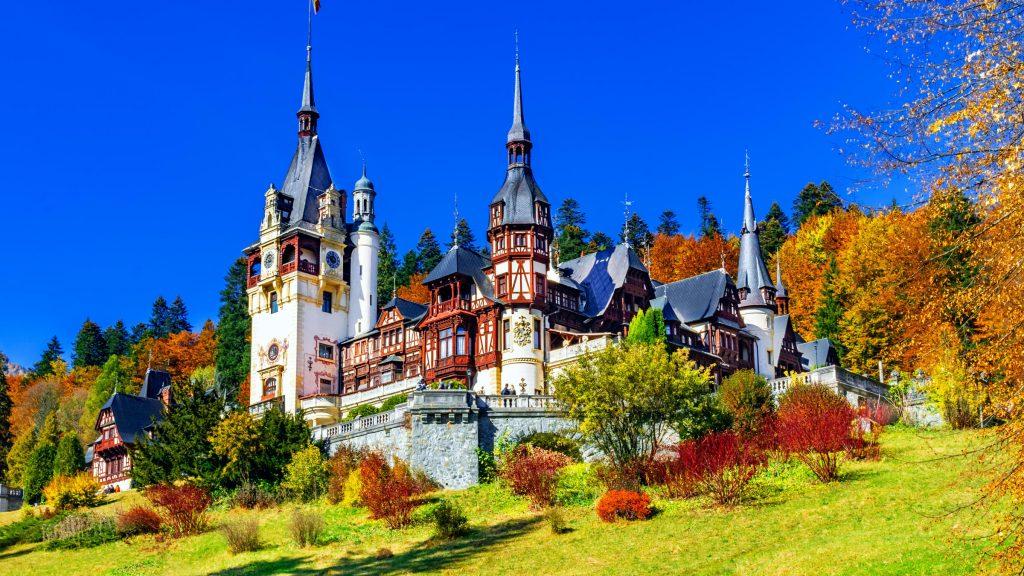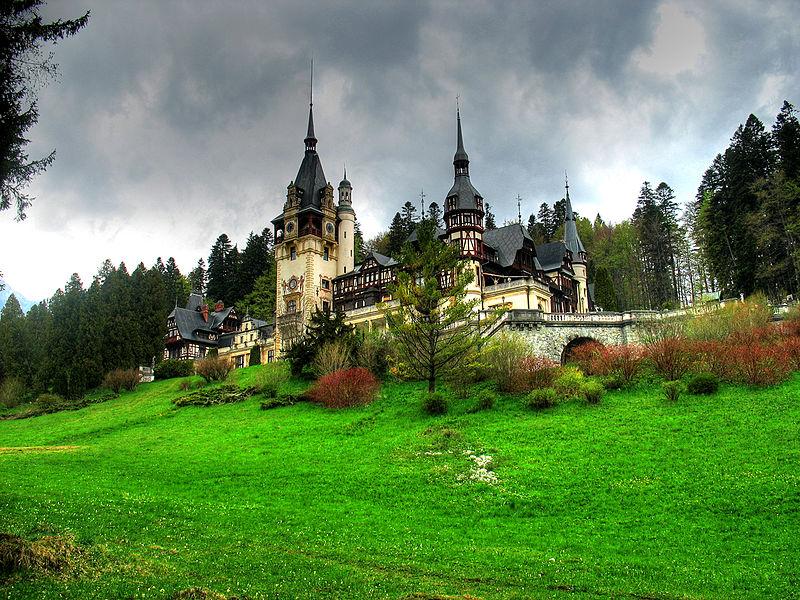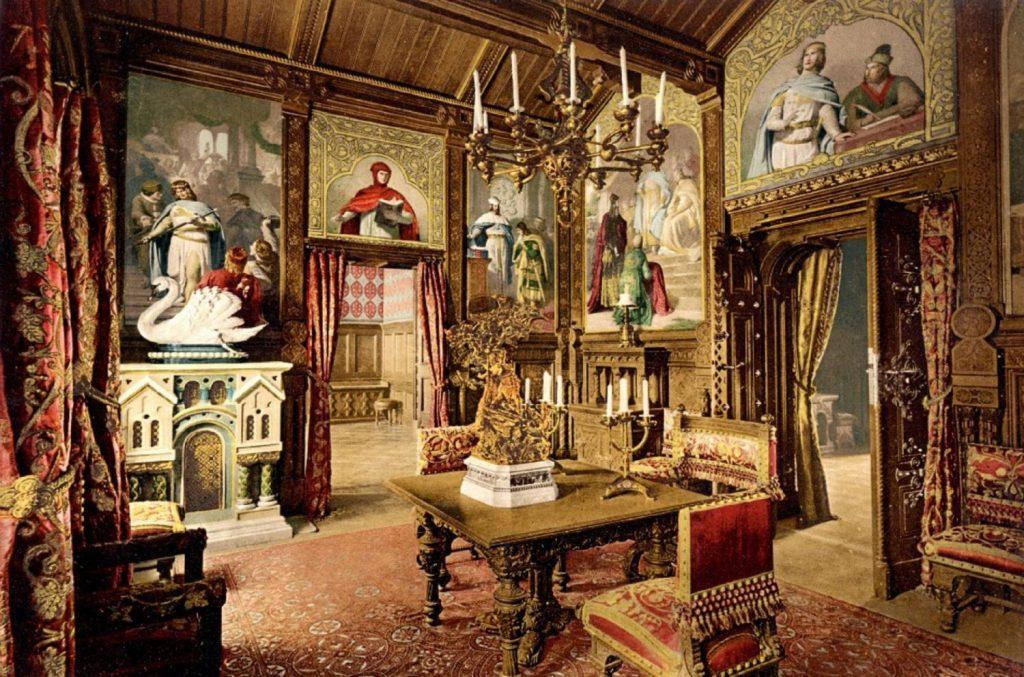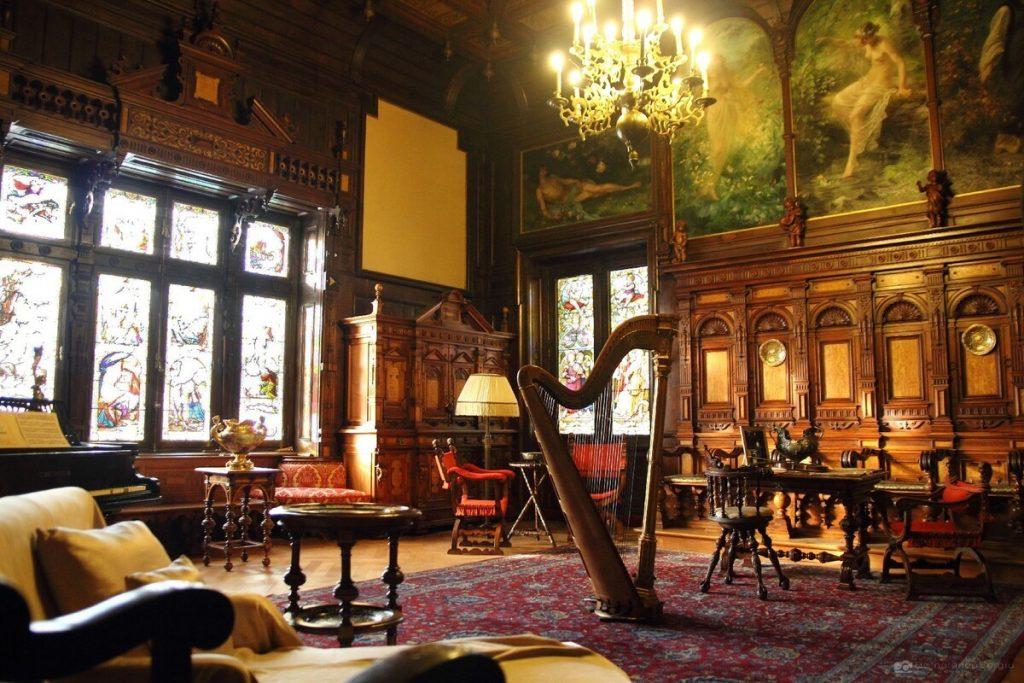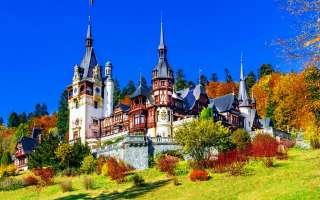Introduction
Regally nestled in the pristine Carpathian Mountains, near the town of Sinaia, in Romania, Peleș Castle stands as an embodiment of architectural elegance and a rich history that spans several centuries. The castle, with its compelling charm, continues to evoke a sense of wonder, whisking its visitors away to an era of royal grandeur.
History of Peleș Castle
Founding and Construction
The inception of Peleș Castle is intertwined with the modern history of Romania itself. The construction of this neo-Renaissance marvel began in 1873 under the auspices of King Carol I of Romania. The location was carefully chosen for its exquisite beauty and the healthy climate. Swiss architect Wilhelm Doderer and his assistant, Johann Schultz, were entrusted with the project, which would later be continued by Charles I’s court architect Karel Liman.
The cornerstone of Peleș Castle was laid in a lavish ceremony in 1875. Subsequent years witnessed the castle’s steady evolution from a humble hunting residence to a grand summer retreat for the Romanian royalty.
The construction work, although briefly interrupted during the war of independence in 1877-1878, was completed in 1883. However, the castle was continually expanded and adorned with the latest conveniences of the era, eventually boasting a central heating system and an electrically lit interior, making it one of the most modern castles of its time.
Significant Historical Events
The castle, throughout its existence, has been a silent witness to significant historical events. King Carol I spent considerable time at the castle, indulging in his favorite pastimes such as hunting and hiking. After King Carol I’s death in 1914, his nephew Ferdinand ascended to the throne and continued to use the castle as a summer residence.
During World War II, the castle served as a royal refuge after King Michael I was forced to abdicate by the communist regime. Subsequently, the castle was closed to the public during the communist era and was only reopened in 1990 after the revolution.
Today, Peleș Castle is a symbol of Romania’s rich heritage, attracting visitors from all over the world who are eager to step back in time and relish in its historical and architectural splendor.
Location of Peleș Castle
Where It Is
Peleș Castle is beautifully ensconced within the scenic grandeur of the Carpathian Mountains, in Prahova County, Romania. The castle is located in the town of Sinaia, approximately 60 kilometers north of Bucharest, the capital of Romania. Sinaia is often referred to as the «Pearl of the Carpathians» for its picturesque landscapes and the charming architectural jewels like Peleș Castle that it houses.
How to Get There
From within Romania:
- From Bucharest: If you are starting from Bucharest, the most convenient way to reach Peleș Castle is by car or train. If you’re driving, you would take the DN1 road north towards Brașov. The journey typically takes around 2 hours, depending on traffic. Alternatively, you can take a train from Bucharest to Sinaia, which is a roughly 90-minute journey. Once in Sinaia, the castle is a short taxi ride or a 30-minute walk uphill.
- From Brașov: If you are in Brașov, you can take the DN1 road south towards Bucharest. The drive typically takes around 45 minutes. There are also regular train services from Brașov to Sinaia.
From Abroad:
If you are traveling from outside Romania, the nearest international airport to Sinaia is Henri Coandă International Airport in Bucharest. From there, you can hire a car or take a train to reach Sinaia. Alternatively, there are bus services that connect the airport with Sinaia, although these may take a bit longer.
It’s important to note that the castle is located on a hill, and it’s a bit of a steep walk from the town center, so make sure to wear comfortable shoes. Plus, the path to the castle through the royal estate offers some splendid views that you wouldn’t want to miss.
Pelesh Castle and Pelishor Castle — is there a difference?
Peleș Castle and Pelișor Castle are two captivating architectural marvels located in Sinaia, nestled in the scenic beauty of the Carpathian Mountains in Romania. These two castles are notable for their striking beauty, historical significance, and the grandeur they add to the Romanian landscape.
Peleș Castle
Peleș Castle, often considered one of the most stunning castles in Europe, is a masterpiece of German neo-Renaissance architecture. Commissioned by King Carol I of Romania in the 19th century, the castle served as the summer residence of the royal family until 1947.
The castle houses 160 rooms, each meticulously adorned with the finest examples of European art, Murano crystal chandeliers, German stained-glass windows, and Cordoba leather-covered walls. From armories housing ancient weapons to a library containing over 4,000 volumes, Peleș Castle showcases a vast collection of art, culture, and history.
Pelișor Castle
A short walk from Peleș Castle leads you to its smaller yet equally enchanting counterpart, Pelișor Castle. This castle was built later for King Ferdinand and Queen Mary, the successors of King Carol I.
Pelișor Castle is a remarkable example of Art Nouveau architecture, and it carries a more personal, intimate atmosphere compared to the larger Peleș Castle. The 70-room castle is famous for its «Golden Chamber,» where the walls are covered in gold leaf and decorated with thistles.
Despite being smaller in size, Pelișor Castle doesn’t lack in opulence and grandeur. The castle is known for its unique blend of Romanian and Byzantine art elements, making it a must-visit place for art enthusiasts.
Visiting these castles gives a fascinating glimpse into Romania’s royal history. It’s also an opportunity to witness the magnificent architecture and design that prevailed in the 19th and early 20th centuries. Whether you’re a history buff, an architecture enthusiast, or a traveler seeking to explore the treasures of Romania, a visit to Peleș Castle and Pelișor Castle will surely leave you enchanted.
Visiting Peleș Castle
Operating Hours
Peleș Castle and Pelișor Castle operating hours are seasonal and vary. Please refer to the specific schedules below:
From May 15, 2023, to September 30, 2023
Peleș Castle
- Tuesday: 09:15 – 17:00
- Wednesday: 10:00 – 17:00
- Thursday to Sunday: 09:15 – 17:00
- Monday: Closed
Pelișor Castle
- Wednesday: 10:00 – 17:00
- Thursday to Sunday: 09:15 – 17:00
- Monday and Tuesday: Closed
From October 1, 2023, to April 14, 2024
Peleș Castle
- Wednesday: 10:00 – 17:00
- Thursday to Sunday: 09:15 – 17:00
- Monday and Tuesday: Closed
Pelișor Castle
- Wednesday: 10:00 – 17:00
- Thursday to Sunday: 09:15 – 17:00
- Monday and Tuesday: Closed
From April 18, 2023, to May 14, 2023
Peleș Castle
- Tuesday: 09:15 – 17:00
- Wednesday: 10:00 – 17:00
- Thursday to Sunday: 09:15 – 17:00
- Monday: Closed
Pelișor Castle
- Wednesday: 10:00 – 17:00
- Thursday to Sunday: 09:15 – 17:00
- Monday and Tuesday: Closed
Last entry for different tours is as follows:
- Optional Tour I: Last entry at 15:30
- Optional Tour II: Last entry at 14:45
- Basic Tour: Last entry at 16:15
The ticket office closes at 16:10.
Seasonal Crowds
The castle tends to be busiest during the summer months, from June to August, with lighter crowds during the shoulder seasons (April, May, September, and October). If you want to avoid larger crowds, consider visiting in the morning right when the castle opens or later in the afternoon when most tour groups have already left.
Admission Fees and Discounts
Tickets for Peleș Castle can be purchased online or at the ticket office. Prices are as follows:
Peleș Castle
- Basic Tour (First Floor): Adults – 50 lei, Seniors – 25 lei, Students/Children – 12.5 lei, Euro <26 cardholders – 12.5 lei
- Optional Tour I (Basement + First Floor): Adults – 100 lei, Seniors – 50 lei, Students/Children – 25 lei, Euro <26 cardholders – 25 lei
- Optional Tour II (Basement + First Floor + Second Floor): Adults – 150 lei, Seniors – 75 lei, Students/Children – 37.5 lei, Euro <26 cardholders – 37.5 lei
Pelișor Castle
- General Admission: Adults – 30 lei, Seniors – 15 lei, Students/Children – 7.5 lei, Euro <26 cardholders – 7.5 lei
Temporary exhibitions are free of charge with the last entry at 16:00.
Tips for Visitors
- Peleș Castle doesn’t have its own parking for visitors, so be sure to plan your transportation accordingly.
- Pets are not allowed inside the museum.
- Flash photography is permitted, but professional photography has associated costs: inside – 1500 lei/hour/castle, outside – 1000 lei/hour/castle. For professional filming: inside – 3000 lei/hour/castle, outside – 1500 lei/hour/castle.
- To receive discounts, valid documentation (student ID, pension card, etc.) is required.
- Purchase tickets online at https://bilete.peles.ro to avoid waiting in line. Payment can be made in cash (only LEI) or by card.
- Due to the high number of visitors during the peak season, it is recommended to visit the castle early in the day or in the late afternoon to avoid the crowds.
Inside Peleș Castle: An Overview of the Interior
Nestled in the picturesque Carpathian Mountains in Romania, Peleș Castle is renowned for its stunningly detailed interior, packed full of artworks, armor, and fine furniture.
Notable Rooms and Collections
Each room in the castle has its unique character and theme. The Grand Armory, or the Arms Hall, houses over 4,000 pieces of weaponry from Europe and the Orient dating from the 14th to the 17th centuries. The Music Room is adorned with hand-carved wooden panels, and the playhouse, designed for the royal children, is a charming sight. One must not miss the exquisite Imperial Suite, adorned in Florentine tradition, a testament to King Carol I’s affinity for refined elegance.
What to See and Do
A guided tour will take you through the ornate rooms, each showcasing different European art styles and decorated with elegant furniture, intricate woodwork, plush carpets, and grand chandeliers. A tour also offers insight into the life of the royal family, sharing interesting stories and legends. Apart from admiring the grandeur, visitors can also enjoy the surrounding natural beauty, with serene walking trails and splendid garden views.
Interesting Facts about Peleș Castle
Built between 1873 and 1914, Peleș Castle was the first European castle to have central heating and electricity. The castle’s seven terraces are decorated with statues, stone-made-wells, ornamental vases, and Carrara marble.
Frequently Asked Questions
- What can and can’t I do during the visit?
Photography may be permitted, but flash photography, selfie sticks, and tripods may be prohibited inside the castle. It’s always advisable to check the latest visitor guidelines. - Are tours available in other languages?
Tours are typically offered in Romanian, English, and other languages. Please check with the castle for the availability of guided tours in your preferred language. - What services are available for visitors?
There may be cafes and souvenir shops within the castle grounds. It’s recommended to check their availability before your visit. - Are there any educational programs or activities for children?
Educational programs or activities for children may be offered. Please check with the castle for current and upcoming programs.
Conclusion
Visiting Peleș Castle offers a fascinating insight into Romania’s history and royal legacy. The ornate interiors, the splendid artworks, and the picturesque surroundings make it a memorable experience.
Please note, the structure of the article can vary depending on specific requirements and the target audience. Always check the castle’s official website for the most up-to-date and accurate information.
What to See Near Peleș Castle
Peleș Castle, located in Sinaia, Romania, is undoubtedly a primary attraction for visitors, but there are also several other notable places to explore in the vicinity. Here are some of them:
- Pelișor Castle: A short walk from Peleș Castle, Pelișor Castle is a smaller yet equally impressive residence that was used by King Ferdinand and Queen Maria of Romania. The interior, especially the golden bedroom, is a must-see.
- Sinaia Monastery: This religious site predates the establishment of the town itself. The complex consists of two courtyards with churches that are considered architectural masterpieces. Don’t miss the old church, which dates back to 1695.
- The Sinaia Casino: Built at the turn of the 20th century, this stunning venue was modeled after the Monte Carlo Casino. It’s now used for conferences and special events, but the grand architecture can still be admired from outside.
- Sinaia Town: Take a leisurely stroll around the town of Sinaia, known as the «Pearl of the Carpathians.» It is filled with charming villas and hotels dating back to the 19th century.
- Cable Car to the Bucegi Mountains: For a change of pace, take a cable car up to the Bucegi Mountains. It offers stunning panoramic views and is a great spot for hiking during the summer and skiing in the winter.
- George Enescu Memorial House: This is the former summer residence of the renowned Romanian composer George Enescu. It’s a delightful visit for music lovers, and you can tour the house and see where he composed some of his works.
These sites, coupled with a visit to Peleș Castle, make for a truly memorable trip to Sinaia.


